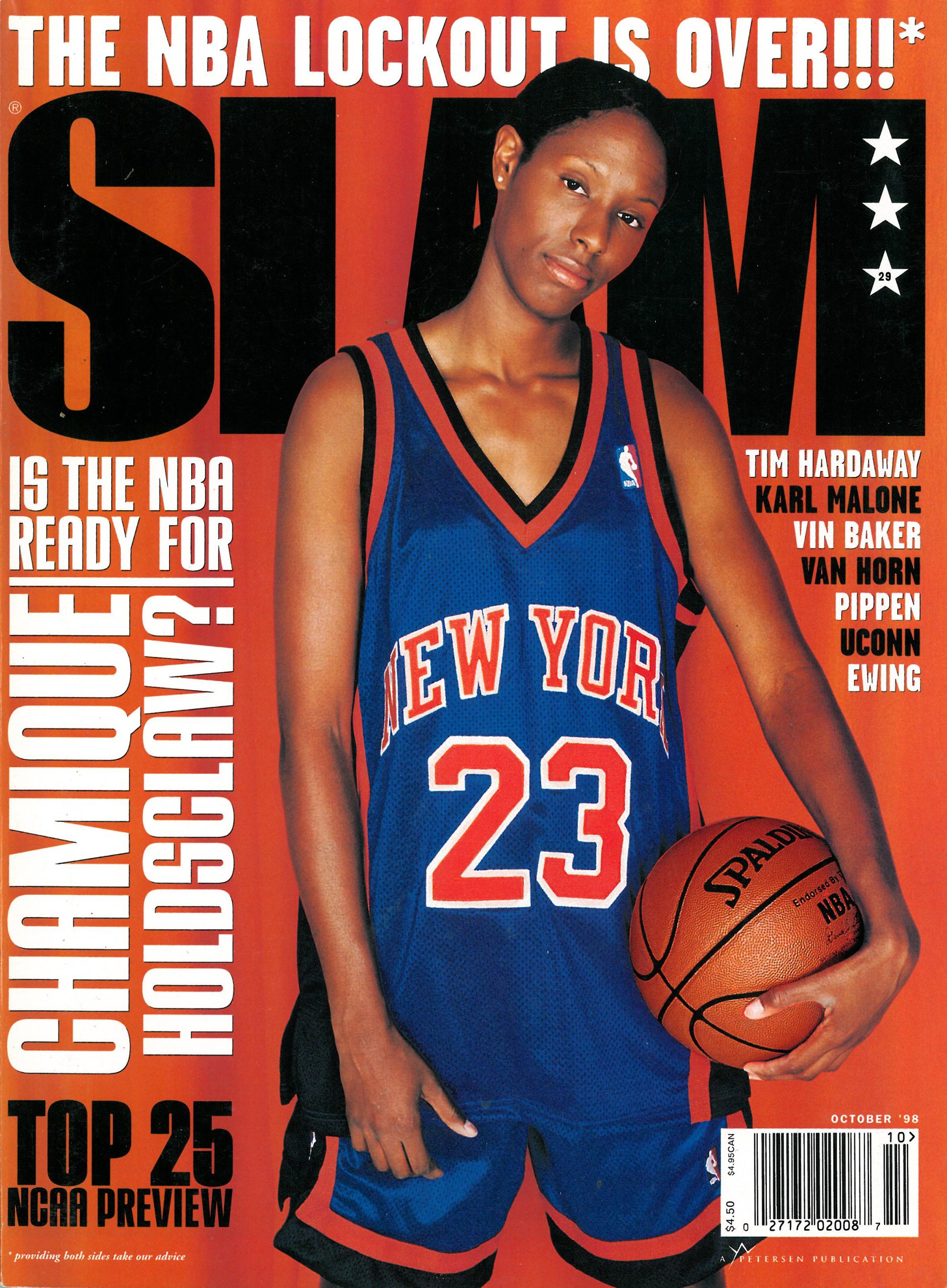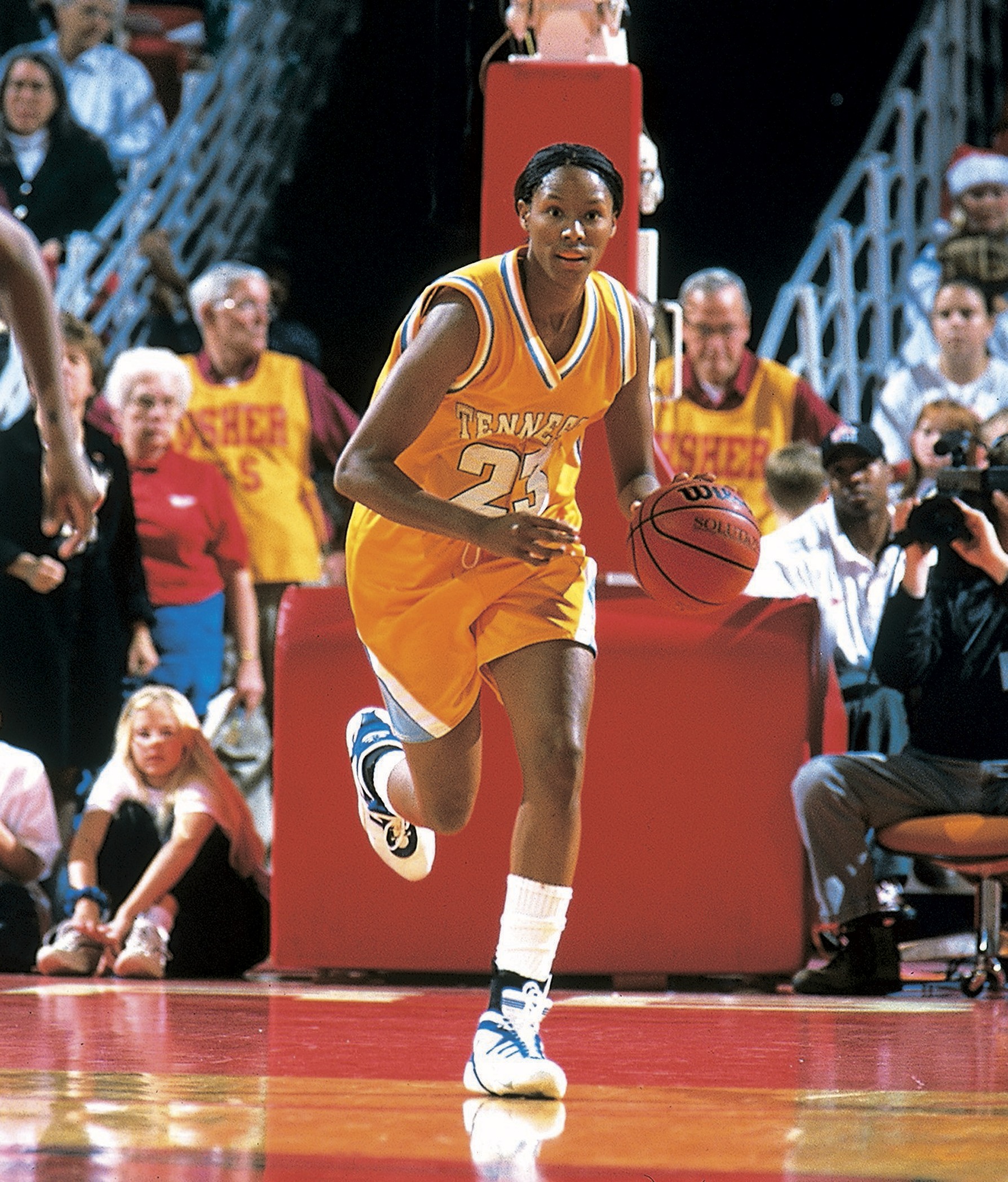For three decades we’ve covered many amazing basketball characters, but some stand above the rest—not only because of their on-court skills (though those are always relevant), but because of how they influenced and continue to influence basketball culture, and thus influenced SLAM. Meanwhile, SLAM has also changed those players’ lives in various ways, as we’ve documented their careers with classic covers, legendary photos, amazing stories, compelling videos and more.
We compiled a group of individuals (programming note: 30 entries, not 30 people total) who mean something special to SLAM and to our audience. Read the full list here and order your copy of SLAM 248, where this list was originally published, here.
Twenty-five years ago, we at SLAM didn’t really comprehend the significance of putting Chamique Holdsclaw on the cover of SLAM 29 wearing an authentic Knicks game uniform. To say otherwise would be untrue. However, the importance of her embodying the early SLAM manifesto, in terms of us publishing a basketball magazine from a grassy knoll, taking pot shots at conventional wisdom, is nearly unparalleled.
Holdsclaw was an exceptional college ballplayer and a gym rat from Queens, NY, and, when we weren’t debating such weighty topics such as ugliest player or douchiest head coach, we, as media provocateurs (which is French for jabronis), wondered aloud whether the NBA was ready for her, rather than the other way around.
We weren’t just questioning whether Holdsclaw could hold her own, but whether the NBA (and society at large, for that matter) could accept a female player in the League. Period. And so the cover line, “Is the NBA Ready for Chamique Holdsclaw?” was both a literal and an existential question. And, for the most part, it was also rhetorical: we already knew the answer and it was “Not yet.” (It would be another 20 years before a second female player, Maya Moore, would own SLAM’s cover, which was still ahead of its time.)

Despite Holdsclaw’s supreme athletic ability and work ethic, we also knew that players like Tracy McGrady and Vince Carter would likely be able (and willing) to drop double nickels on her nightly if given the opportunity. The NBA players who we spoke with as they came through New York confirmed as much, privately. Indeed, any opportunity to try out for an NBA team would come with a bull’s-eye.
But, someone had to be first, what if it were her? Holdsclaw was entering her senior year of college, and had, among many positive qualities, one transcendent characteristic: a preternatural calm demeanor that hid a burning competitiveness. She could shoot and rebound and was unaccustomed to failure. A relentless two-way player, she won four consecutive state high school titles and three consecutive national championships with the Lady Vols. Her college coach, the legendary Pat Summitt, called her a “Jordan-type player and person,” which was all we needed to hear.
She was drafted first by Washington in the 1999 WNBA Draft and would play a decade in the W, averaging 17-8-3 over the course of her pro career. Later, Holdsclaw would describe the Knicks cover as “a statement piece: Women’s basketball had arrived.” The thing is, SLAM wasn’t joining the chorus, we were actually leading it. And it wasn’t actually a chorus, back then, it was really just a handful of us sitting in a windowless room at the decrepit-ish SLAM offices.
We were fortunate that social media was non-existent back then, otherwise Holdsclaw would’ve been drawn into an ugly back-and-forth between the sexes about her worthiness, which was something she didn’t ask for or deserve. And what we considered to be a legitimate attempt to frame a larger point about the progress (or lack thereof) of gender equality in sports would have been ridiculed or seen as a cynical move. In those days, anger was communicated to us through handwritten, honest-to-goodness hate mail from readers. Surrounding Holdsclaw, negative response was largely muted, which as far as I was concerned, was a slam dunk. Until it wasn’t.
A week after the issue dropped, my phone rang and a dispassionate female voice on the other end said simply, “Hold for Coach Summitt.”
Gulp.
Ten seconds later, Coach’s familiar drawl was stinging my ears. “Are YOU the FUCKING BLOCKHEAD that almost ruined my player’s ELIGIBILITY!?” She was in zero mood for me. Apparently, as Coach then scream-splained to me, had Holdsclaw accepted the uniform after the shoot—which she did not—she would be in violation of NCAA rules and would lose her eligibility. I could so see us doing that by accident.
I then acknowledged that yes, in fact, I was the decision-maker on the Chamique Holdsclaw story and tried to explain my thought process. I even employed the phrase “chip away at the male patriarchy” in an effort to butter her up/get her to stop shouting at me. She listened for a few seconds and then abruptly hung up on me.

Part of me thinks she was satisfied with my answer and actually saw progress. SLAM had gone 28-for-28 with men on the cover until we decided to change the game with someone that she herself had coached up.
But more than likely, Coach Summitt just didn’t feel like spending any more time than absolutely necessary talking to a fucking blockhead.
Photo via Getty Images.